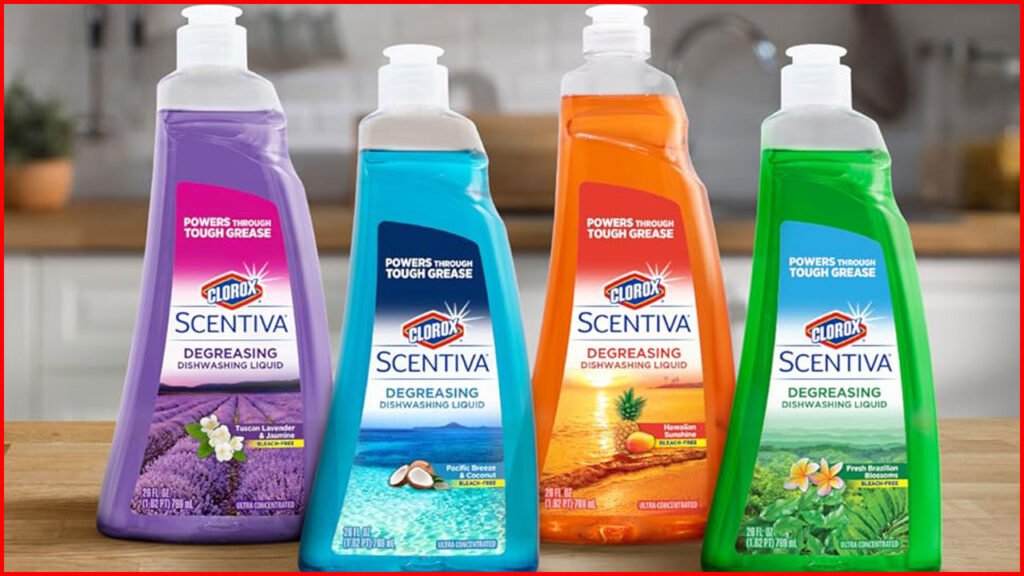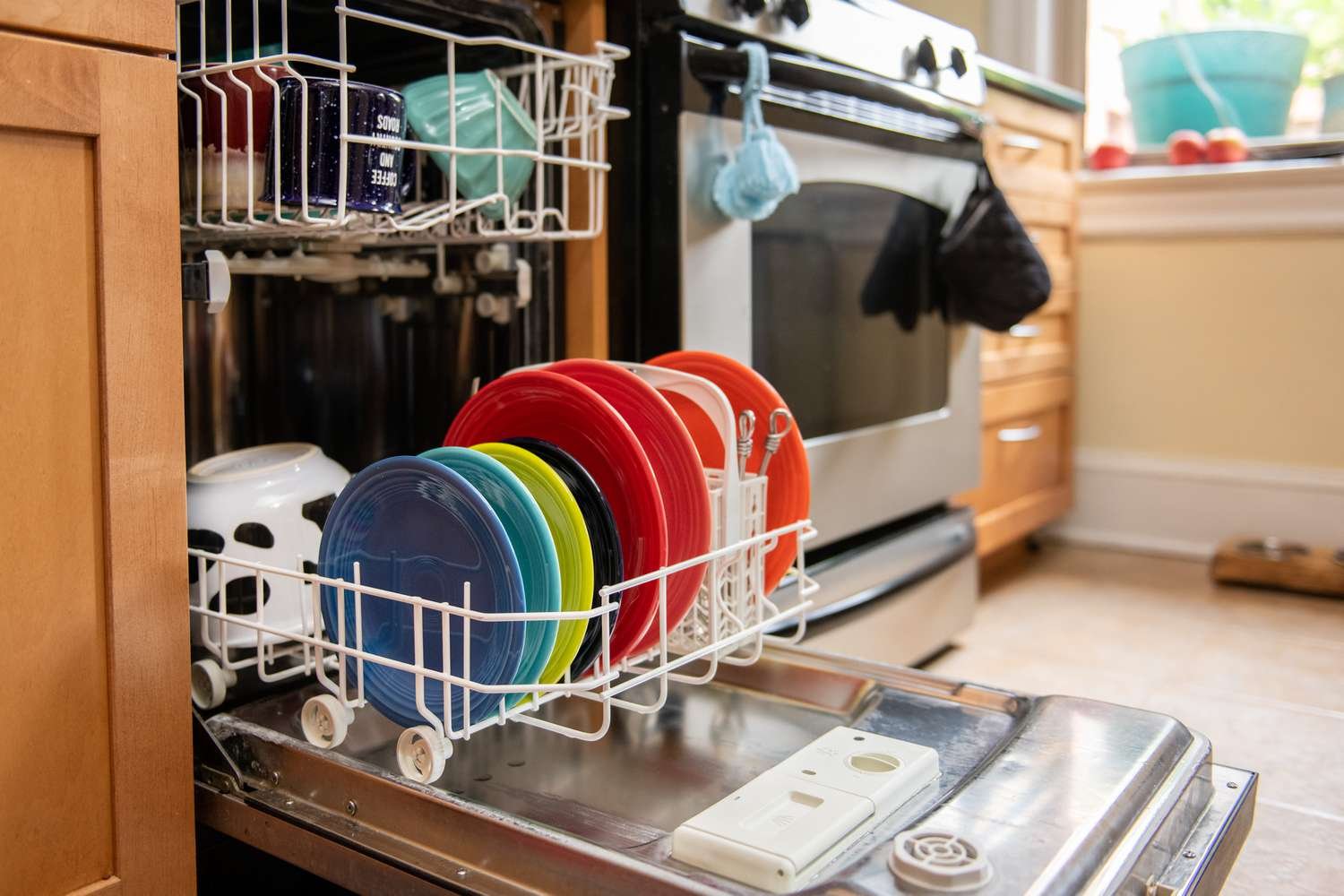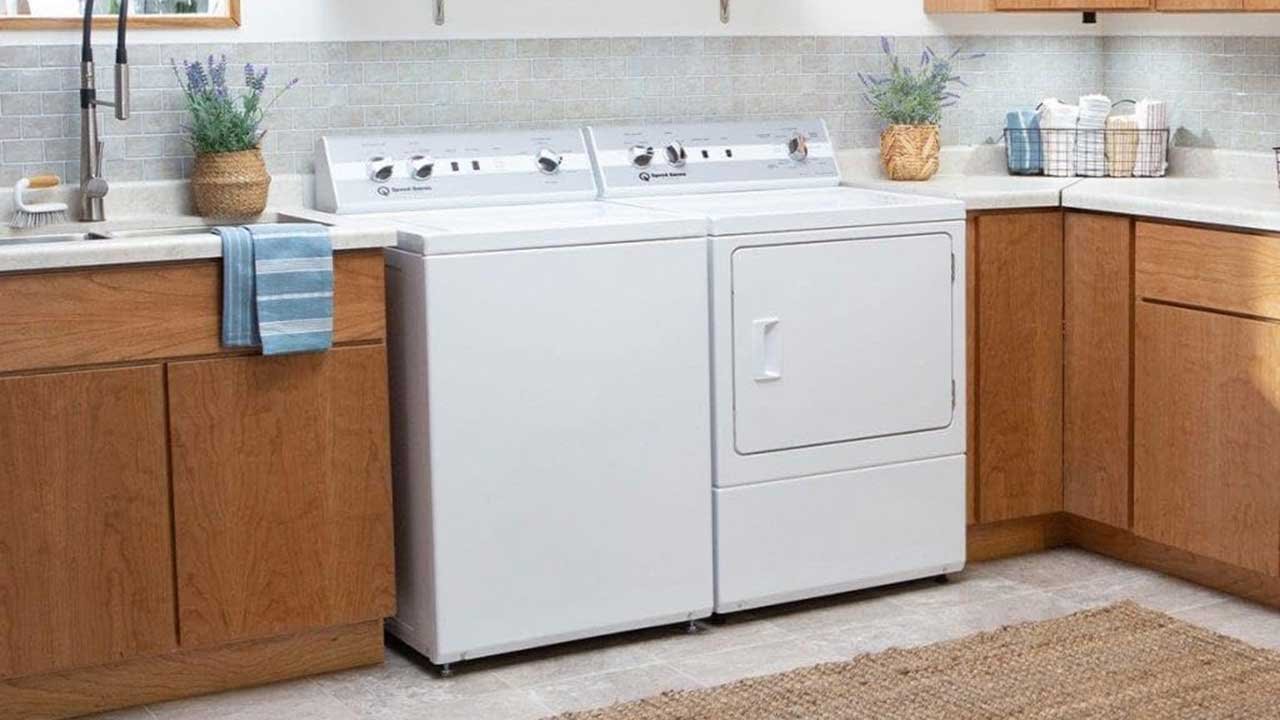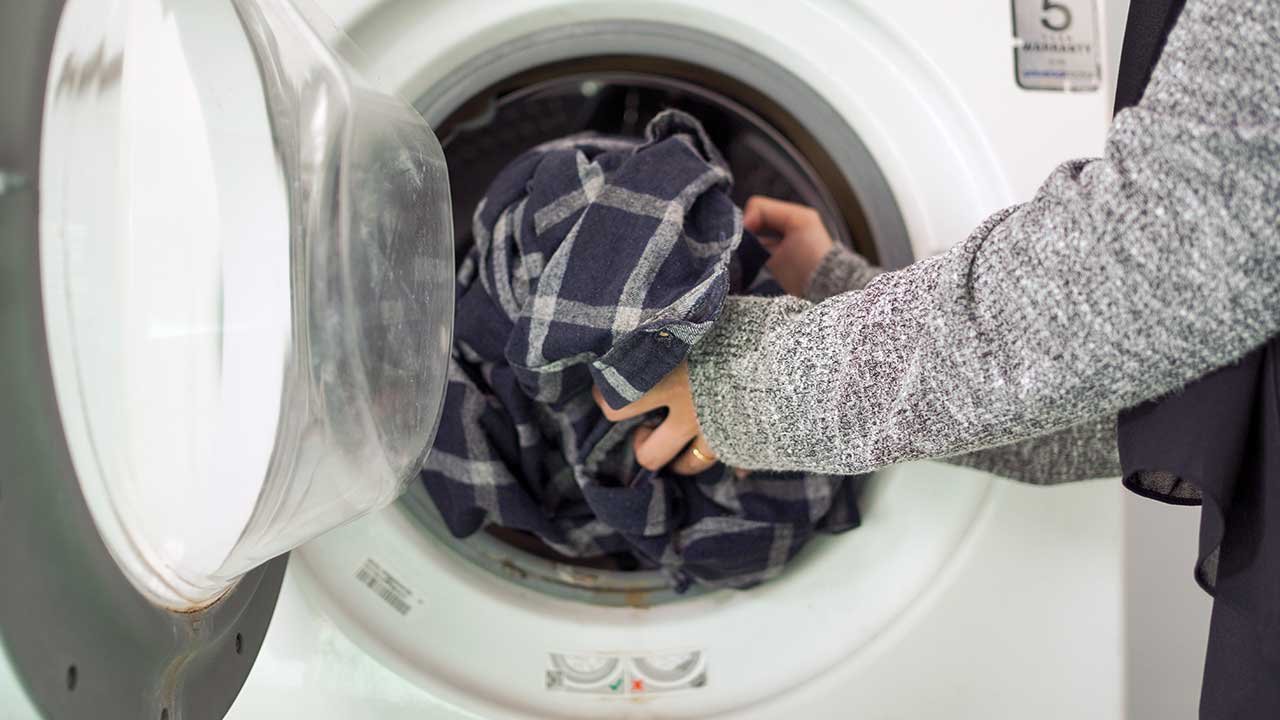The best way to use dishwashing liquid is by diluting it in water before use. Use a few drops per sinkful for effective cleaning.
Dishwashing liquid is essential in every kitchen, tackling the tough job of cleaning dishes and cookware. It’s designed to cut through grease, remove food residue, and leave your glassware, utensils, and plates sparkling clean.
Optimal use of this powerful cleaner not only ensures your dishes are hygienic but also helps in conserving the liquid and saving money.
As dishwashing solutions are concentrated, using them judiciously can avoid wastage. Direct application might lead to using more product than necessary.
This guide aims to provide a clear, concise instruction on getting the most out of your dishwashing liquid, ensuring a clean outcome while being economical and environmentally conscious.

The Essence Of Dishwashing Liquid
Dishwashing liquid plays a vital role in keeping dishes sparkling clean. Its purpose goes beyond mere cleaning. Effective dishwashing liquid fights grease removes stuck-on food, and sanitizes your dishes. Choosing the right dishwashing liquid is crucial because it touches everything you eat. Let’s dive into what makes dishwashing liquids a kitchen staple.
Core Ingredients And Their Functions
Dishwashing liquids contain several key components. Each ingredient serves a specific function to ensure your dishes come out spotless.
- Surfactants: Cut through grease and grime.
- Buffers: Maintain the right pH for cleaning.
- Preservatives: Keep the liquid fresh and effective.
- Fragrances: Leave a pleasant scent.
- Colorants: Give the liquid its appealing color.
Why Concentration Matters
The concentration of a dishwashing liquid determines its cleaning power. More concentrated formulas mean you can use less product for the same amount of dishes. This not only saves money over time but also reduces waste, making it a more environmentally friendly option.
| Concentration | Cleaning Efficiency | Usage |
|---|---|---|
| High | Powerful grease removal | Less liquid per wash |
| Low | Basic cleaning | More liquid per wash |
Remember, follow the instructions on the dishwashing liquid label. This ensures optimal performance and dish care. Whether tackling a mountain of plates or a single cup, the right dishwashing liquid makes the job easier.
Proper Dishwashing Techniques
Proper dishwashing techniques ensure that dishes are not only clean but also that the dishwashing liquid is used efficiently. Mastering the art of dishwashing can save both time and money. Grasping the best methods for pre-rinsing and the choice between a sponge or brush can make a huge difference.
Pre-rinsing: Is It Necessary?
The debate on pre-rinsing dishes before washing them is longstanding. Pre-rinsing can remove loose food particles, making the actual wash more effective. Understand your dishwasher detergent. Some require pre-rinsed dishes to work best. Others claim to break down food residue without the need for pre-rinsing.
- Check detergent instructions.
- Remove large food pieces by hand.
- Rinse if detergent needs pre-cleaned dishes.
- Conserve water by scraping instead of rinsing when possible.
Sponge Or Brush: Maximizing Soap Efficacy
Choosing the right tool is essential for maximizing the efficacy of your dishwashing liquid. Sponges are great for delicate items and can hold soap well. Brushes, on the other hand, provide excellent scrubbing power for tougher grime.
| Tool | Usage |
|---|---|
| Sponge | Dishes with light residue and delicate glassware. |
| Brush | Pots and pans with stuck-on food. |
- Wet sponge or brush with warm water.
- Apply a small drop of dishwashing liquid.
- Clean dishes in warm, soapy water.
- Rinse thoroughly under running water.
Remember to replace sponges frequently and clean brushes to prevent bacteria growth.
Maximizing Efficiency With Minimal Soap
Maximizing Efficiency with Minimal Soap is all about using dishwashing liquid smartly to clean dishes effectively while conserving the product and reducing environmental impact. This method ensures an immaculate clean without wasting soap, leaving no soapy residue on your favorite dishes.
The Ideal Dosage For Different Load Sizes
Getting the soap dosage right can be a game-changer. Here’s a quick guide:
| Load Size | Ideal Dosage |
|---|---|
| Small Load | 1 teaspoon |
| Medium Load | 1.5 teaspoons |
| Large Load | 2 teaspoons |
Tips For Reducing Waste And Avoiding Residue
- Fill sink with water before adding soap to create a uniform mix.
- Use a sponge with a dispenser to control soap usage.
- Dip only the tip of the sponge in soap for light cleans.
- Clean with warm water to help cut grease with less soap.
- Rinse thoroughly to ensure no soapy residue is left.
- Measure soap rather than eyeballing to avoid overuse.
These simple adjustments can transform the dishwashing routine, leading to shining results with just a fraction of the standard soap amount.
Alternate Uses Of Dishwashing Liquids
Dishwashing liquids are not just for tackling greasy pans. These powerful cleaners offer various home solutions. Discover new ways to put your dishwashing liquid to work!
Stain Removal Magic On Clothes And Surfaces
Dishwashing liquid excels at removing stains. It lifts them from clothes and surfaces without harsh chemicals.
- Mix with water for a pre-treatment on fabric stains.
- Apply directly to stubborn spots, let sit, then wash as normal.
- Squeeze onto kitchen countertops to remove cooking spills.
Multipurpose Cleaning: Beyond The Sink
Extend the versatility of dishwashing liquid to other cleaning tasks.
| Item | Method |
|---|---|
| Windows | Add a few drops to a bucket of water. Wipe with a soft cloth. |
| Floors | Combine with warm water for mopping. Requires no rinsing. |
| Outdoor Furniture | Use a mixture on plastic or vinyl chairs. Rinse off with a hose. |
These alternative uses make dishwashing liquid a must-have in any cleaning arsenal. Embrace its full potential!
Fixing Common Dish Soap Issues
Troubleshooting Common Dish Soap Issues often involves looking beyond the suds. While dishwashing liquid is a staple in most kitchens, sometimes it doesn’t perform as expected. This part of our post will highlight solutions to common problems you might face in your dishwashing routine.
Handling Water Spots And Film
No one enjoys the sight of dishes dulled by water spots and film. This issue often stems from hard water or drying methods.
- Add white vinegar: A natural rinse aid like white vinegar helps to eliminate spots and film.
- Use rinse agents: Commercial rinse agents can also prevent these blemishes.
- Hand-dry dishes: Quickly drying dishes with a clean cloth is effective too.
Consistency is key in tackling water spots. Incorporate these tips into your routine for the best results.
Dealing With Grease: A Persistent Foe
Grease fights back. Even with a powerful dishwashing liquid, some grease may linger.
- Pre-treat dishes: Apply dish soap directly to greasy areas and let sit for a few minutes.
- Hot water works wonders: Always use the hottest water you can handle to break down grease.
- Double-duty detergents: Choose a dish soap with built-in grease-fighting properties.
Regularly change the dishwater. This simple step is often overlooked but crucial in combating grease.
Eco-friendly And Homemade Soap Options
Many of us are seeking ways to clean our dishes without harming the planet. An excellent method involves the use of eco-friendly and homemade dish soaps. Crafted with gentle ingredients, they cut through grease while being kind to our waterways.
Navigating The World Of Green Dish Soaps
Green dish soaps come in varieties that respect the Earth. Here’s how to pick:
- Check labels for plant-based ingredients. These are often less harsh on the environment.
- Look for biodegradable formulas. These soaps break down naturally in ecosystems.
- Avoid synthetic fragrances and dyes. Natural alternatives are more eco-friendly.
- Choose concentrated soaps. They reduce packaging waste and transportation emissions.
Diy Dish Soap Recipes For The Environmentally Conscious
Creating homemade dish soap is easier than you might think. Try these steps:
- Mix 1/2 cup of castile soap with 1 3/4 cup water.
- Add 1/2 teaspoon of lemon juice. This cuts grease and leaves a fresh scent.
- Include 1 teaspoon of baking soda. It boosts cleaning power naturally.
- Shake ingredients in a reusable bottle.
These simple recipes save money and protect our planet. With each wash, enjoy the peace of mind that comes from sustainability.
FAQ
What Is The Way To Use Dishwashing Liquid?
To use dishwashing liquid, fill the sink with hot water, add a few drops of the liquid, soak the dishes, scrub with a sponge, and then rinse with clean water.
How Do You Wash Dishes With Dishwashing Liquid?
Begin by wetting dishes and applying dishwashing liquid. Scrub with a sponge or brush, ensuring you cover all surfaces. Rinse thoroughly with water to remove suds and residue. Lastly, dry with a clean towel or air dry.
What Is Instruction Of Use Of Dishwashing Liquid?
Wet your sponge or dishcloth with warm water. Apply a few drops of dishwashing liquid directly onto the cleaning tool. Scrub dishes to remove food and grease. Rinse thoroughly with clean water. Use sparingly, as a little goes a long way.
Should You Put Water On Dishwashing Liquid?
No, you should not put water directly on dishwashing liquid. Instead, add dishwashing liquid to water to create suds for effective cleaning.
Bottom Line
Embracing the power of dishwashing liquid is a game-changer for kitchen efficiency. Ensure you use the correct amount to avoid waste and reap maximum benefits. A strategic approach transforms cleaning, making dishes sparkle effortlessly. Adopt these tips and elevate your dishwashing routine, saving time and resources.



